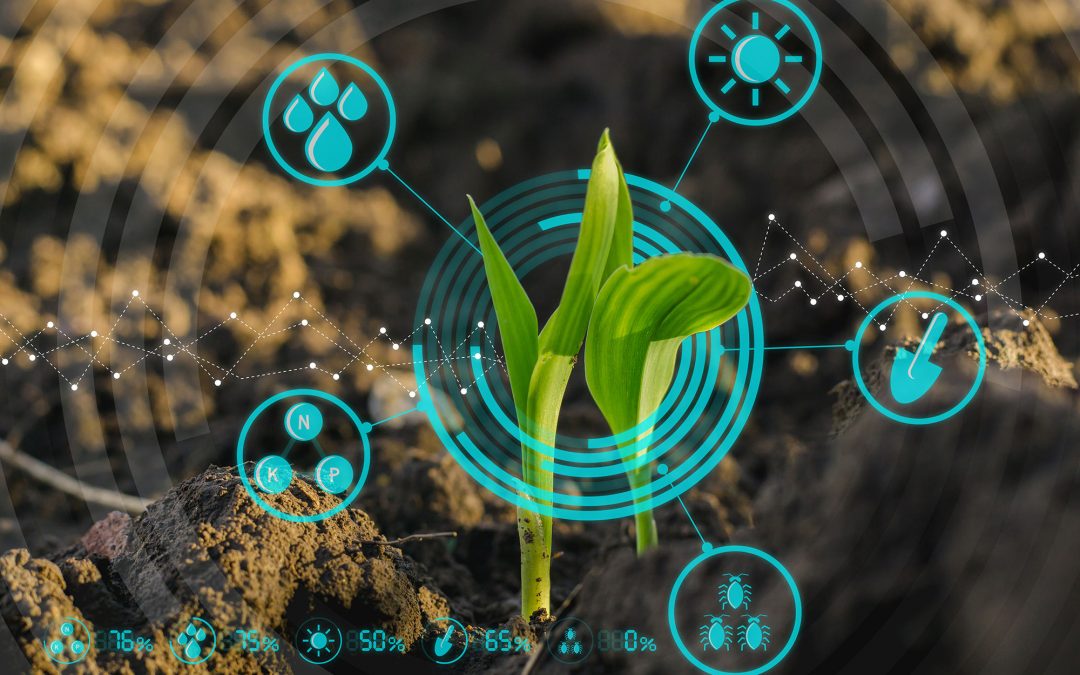One of the biggest challenges facing farmers — and many consumers — is how to control destructive insects, diseases, and weeds while avoiding or reducing the negative effects associated with using agrochemicals. There is growing support for new products and methods that address these issues, and there are a number of viewpoints on the best means to do so.
In May, I had the opportunity to moderate a panel discussion on these and other topics at the 2018 Silicon Valley AgTech Conference. As an entrepreneur with more than 10 years of experience in sustainable and renewable technologies, I was interested to learn how others in the industry envision the future of crop protection. The panel included key players in agtech investment, manufacturing, and distribution, as well as a technology executive at Bowles Farming Co.,11,000-acre specialty crop farming company.
Some speakers felt that synthetic pesticides can be more sustainable than their organic counterparts. Others stressed that opportunities abound in the field of what is known as biopesticides, which are naturally occurring substances that control pests by non-toxic mechanisms, as defined by the EPA. The panel also touched on innovations in robotics and automation that can dramatically reduce the quantity of agrochemicals necessary to control weeds, insects, and diseases.
Synthetic and natural pesticides
In the past decade, an increasing number of consumers have expressed concern about the safety of traditional pesticides and shown support for organic farming methods. According to the USDA’s Agricultural Marketing Service, the goal of organic farming is to “integrate cultural, biological, and mechanical practices that foster cycling of resources, promote ecological balance, and conserve biodiversity.” The department reported last year that there were 24,650 certified organic farming operations in the United States — a 70 percent increase since 2008.
But, as panelist Danny Royer pointed out, “organics are not pesticide-free.” Royer is vice president of technology at Bowles Farming Co., a sixth-generation operation based in Los Banos, California. “Pesticides used in organic farming still contain chemicals,” he explained. “You are just deriving those chemicals from a different source, and they’re usually less concentrated. But when farmers have to apply these pesticides 10 times versus two times, that’s not sustainable.”
Panelist Ron Meeusen argued that certain synthetic pesticides, which may require fewer applications due to their efficacy, could potentially still be more desirable than their all-natural counterparts. Meeusen is the managing director of Cultivian Sandbox, a venture capital firm that has raised $250 million and invested in 23 food and agtech companies.
Although some panelists observed that natural products can have a reputation as being less effective than synthetics, Mike Wilbur, corporate vice president of business development at Wilbur-Ellis, the third largest agricultural distributor in the country, reported that the demand for biopesticides is skyrocketing in response to rising consumer demand for sustainably produced foods.
Glen Johnson, former president, CEO, and chairman of Kocide LLC, a leader in copper-based fungicide and bactericide products, echoed that sentiment, noting that companies that are developing biopesticide, biological, or natural products are looking at 15 to 17 percent annual compound growth rates. “With biologicals, you can get expedited reviews by many environmental regulatory agencies, including the EPA, as well as oversight groups in Brazil, China, and some countries in Europe. If you’ve got something that fits those markets, there are huge opportunities.”
Reflecting the impact of consumer demand, Meeusen pointed out that companies are now pursuing alternate approaches to crop protection, including protective physical coatings for plants and electronic devices that emit frequencies capable of destroying mosquito larvae, for example. “There are many non-chemical, non-biological approaches being explored, some of which may be made even more effective when you combine them with robotic and automation technologies,” he said.
Automated pest control
While the panelists acknowledge that pesticides are here to stay, some agtech companies are working to give growers tools to address rising pest resistance and increasing regulatory pressure derived from ecological impact. Traditionally, instead of targeting weeds, the chemicals are sprayed across entire fields. According to a Pesticide Action Network statistic cited in Scientific American, 95 percent of pesticides applied in this fashion miss their targets and are wasted.
This is where artificial intelligence can be a huge help. A new method informally dubbed “see-and-spray” uses robots programmed to determine the differences between plants and weeds. Bots equipped with cameras essentially roam fields looking for weeds and spraying them directly with herbicides. If the robot identifies a healthy plant, it can be programmed to drop fertilizer instead. Blue River Technology, a California-based company developing such systems, was acquired in 2017 by John Deere for $305 million.
During the panel, I heard a lot of interesting ideas on how the industry is addressing pesticide mitigation, including advocating for more efficient pesticides and continuing to develop biological and natural alternatives. My company, Crop Enhancement, is one of several working to enable sustainable crop production practices worldwide by offering growers new and effective tools that increase crop yields while helping food companies meet sustainability goals and, ultimately, the demands of today’s consumers. I am looking forward to the development of more crop protection technologies and encourage entrepreneurs to keep innovating in this space — there is vast demand and thus enormous potential for growth.
Kevin Chen, PhD, is CEO of Crop Enhancement, a venture-backed ag biotech company based in San Jose, California.
